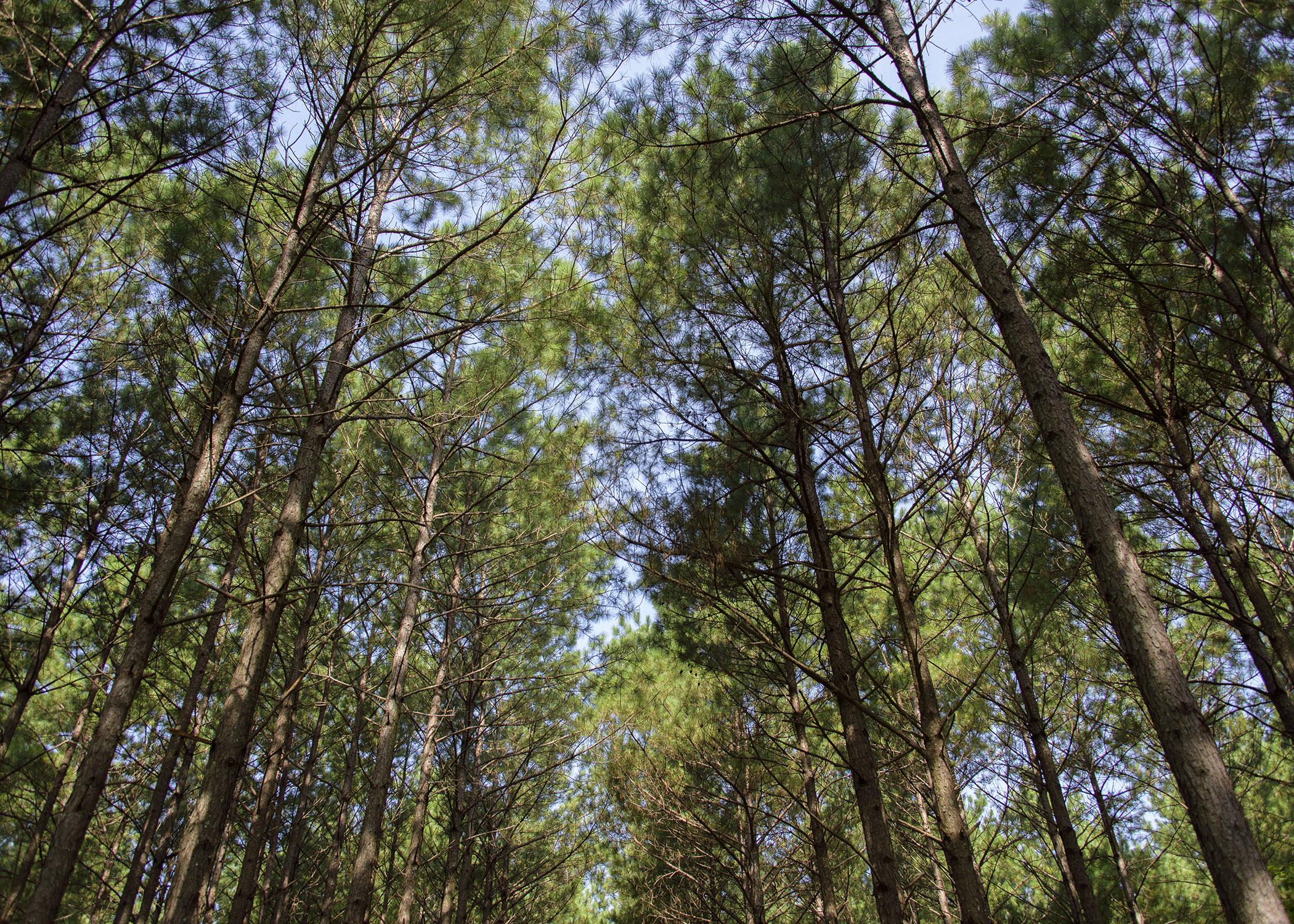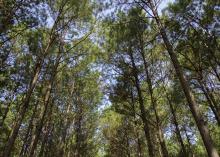Forestry regains its No. 2 spot in the state
STARKVILLE, Miss. -- Although prices for timber were lower in 2024, harvest on the state’s forest land was up about 8%, giving forestry an expected value of $1.5 billion, similar to what it had in 2023.
Because soybeans saw a fairly significant decrease in price, forestry regained the No. 2 agricultural commodity spot in Mississippi. Poultry continues to hold the top spot with an anticipated value of $3.8 billion, and soybeans holds No. 3 with a $1.3 billion estimated 2024 value. These figures are tabulated annually by agricultural economists with the Mississippi State University Extension Service.
Eric McConnell, associate professor of forest business in the MSU Department of Forestry and Forest and Wildlife Research Center, said forestry was expected to harvest 36.6 million tons in 2024. The final number in 2023 was 33.8 million tons.
“Mississippi prices trended up slightly each quarter, but prices on average were down in 2024 versus 2023,” McConnell said. “The overall value of production came in at $1.48 billion, same as last year.
“There was $727.9 million paid to landowners for standing timber, while harvest and trucking added $756.4 million of value to the industry,” he said.
Forestry is big business in the state, generating an estimated 84,000 jobs and $4.5 billion in income.
“These numbers have gotten a big boost from the new mills and expansions we have had recently,” McConnell said.
He said average timber prices have been steady since the 2007-2009 global recession, with prices in the big picture staying relatively consistent at 10% up or down from current prices.
“Technology has increased the precision of converting our timber into forest products, which in turn has removed a lot of the variability and consequently price volatility,” he said. “The true variable costs are where society can impact prices.”
McConnell said prices across the South for standing timber trended down slightly over the course of this year compared to recent years, but Mississippi bucked that trend.
“We had new sawmills and expansions come online, which boosted output,” he said. “It is a Catch-22, though, because only 60 to 70% of a sawlog is converted into lumber. A large part of the lumber byproduct actively competes with pulpwood logs to serve the pulp and paper industry.”
There is good news for northeast Mississippi as two new mills seeking pulpwood logs were announced. These facilities will provide an outlet for forest thinning, which will aid forest health.
According to Extension agricultural forest economist Sabhyata Lamichhane in the Mississippi Timber Price Report, stumpage prices seem to be fairly flat over the past two or so years and have not changed much.
The wood products market declined late in the year, with price drops for Southern pine lumber and Southern oriented strand board, or OSB.
“Looking ahead, stumpage prices are expected to decline in the short term as drier weather conditions set in,” Lamichhane said. “Mississippi’s abundant standing timber supply will continue to exert downward pressure on prices.
“However, there is positive momentum in the industry, with ongoing progress in mill expansions and new mill construction projects,” she said.
McConnell said transportation of timber and forest products got assistance from the state government in 2024.
“Our lawmakers increased the gross vehicular weight loggers can carry on state highways with a harvest permit,” he said. “This is a testament to the responsible ethic that industrial forest operators give to our timberlands and the respect given to forestry’s economic importance.”
Weight limits on local bridges affect transportation, and many times, log trucks must take alternative routes to avoid low-weight bridges. This adds time and money to the cost of delivering the wood and ultimately lowers what can be paid for standing timber.
Kristy McAndrew, forest health specialist with the MSU College of Forest Resources, said two years of drought and the pest problems that accompany drought have led to some increased harvests.
“A lot of people who could afford it did harvest their timber,” McAndrew said. “But some said they were on a waitlist until next year to get harvested.
“In the southern part of the state, I’ve been seeing two big effects of the drought,” she said. “There was already a huge increase in Ips beetles attacking the trees after the 2023 drought, and this year I got a lot of questions about defoliator pests.”
Ips beetles attack stressed pine trees, but Southern pine beetles can go after healthy trees. McAndrew said the best defense is to always follow best management practices for timberland.
“Be sure to keep up with thinning your stands, as this is really important for the trees’ health,” she said. “Even in times when there will be drought or pest problems, a thinned stand is likely going to fare better.”
McConnell added that working with a professional forester is the best way to market trees.
“They can get you an accurate inventory, advertise your sale and highlight the positive attributes your property possesses, and ultimately earn you a sizable percentage more in income than you would earn selling it yourself,” he said.













